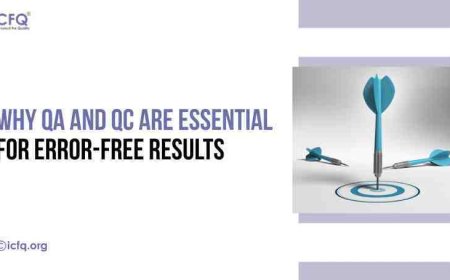Understanding Six Sigma Meaning
Discover the key principles of Six Sigma and its impact on business efficiency. Understanding Six Sigma Meaning is essential for improving quality and reducing defects.

Six Sigma is widely recognized for its role in improving quality and efficiency across industries globally. Originating from Motorola in the 1980s, Six Sigma serves as both a method and philosophy focused on minimizing defects and variability in processes to enhance overall business performance. At its core, Six Sigma aims for near perfection by targeting a maximum of 3.4 defects per million opportunities, emphasizing rigorous standards and continuous improvement. This method follows the DMAIC approach—Define, Measure, Analyze, Improve, Control—which helps organizations systematically identify issues, analyze root causes, and implement sustainable solutions.
Understanding Six Sigma involves familiarizing oneself with its certification levels: Six Sigma Green Belt, Black Belt, Yellow Belt, and Master Black Belt. Each level signifies proficiency in statistical tools and project management techniques crucial for driving quality initiatives forward. Courses in Six Sigma and Lean Six Sigma equip professionals with the necessary skills to lead projects and achieve measurable improvements in process efficiency. Whether through traditional classroom sessions or online platforms, Six Sigma courses offer tailored training to suit various learning styles and career objectives. Embracing Six Sigma principles enables organizations to streamline operations, optimize resources, and ultimately deliver exceptional products and services that meet customer expectations. Grasping Six Sigma meaning goes beyond understanding its methodologies; it embodies a commitment to excellence and continual progress in achieving operational efficiency and customer satisfaction.
Understanding Six Sigma: What It Means, Courses, and Certifications
Six Sigma is a methodical approach to improving processes by identifying and eliminating defects. Originating in the 1980s at Motorola, it focuses on enhancing quality and efficiency across industries, whether in manufacturing or services.
Courses and certifications in Six Sigma cater to professionals at different levels: Yellow Belt, Green Belt, Black Belt, and Master Black Belt. Each level indicates varying skills and responsibilities in driving process improvements. These programs typically cover statistical tools, project management techniques, and leadership skills essential for leading Six Sigma projects effectively.
For those interested in learning Six Sigma, there are many online courses available. These courses offer flexibility in learning and often blend theory with practical applications. They prepare individuals for globally recognized certification exams. Whether you seek career advancement or aim to enhance organizational efficiency, understanding Six Sigma meaning and pursuing certification can significantly benefit your professional growth and project success. Six Sigma meaning lies in its ability to streamline processes and reduce defects, making it a valuable asset in today's competitive business environment.
Understanding the Challenges of Six Sigma
Understanding Six Sigma involves learning its methods, tools, and the DMAIC process framework (Define, Measure, Analyze, Improve, Control). One major challenge is understanding exactly what Six Sigma means in different organizations. It's not just about statistics but also about changing company culture and aligning strategies.
Challenges in Understanding Six Sigma
1. Complex Language: Six Sigma uses specialized terms that can be confusing for beginners without proper guidance.
2. Implementing Effectively: Applying Six Sigma principles requires understanding how each DMAIC phase improves processes.
3. Resistance to Change: Companies may meet resistance or lack support from people who don't know Six Sigma's benefits.
4. Training and Certification: Finding good training programs that explain Six Sigma methods and their uses can be hard.
5. Measuring Success: Deciding what goals to measure and what tools to use is hard when using Six Sigma.
6. Fitting with Current Processes: Mixing Six Sigma with current processes without stopping normal work is hard.
Understanding Six Sigma needs a careful plan and a promise to keep getting better. By making Six Sigma clearer and fitting it with business goals, companies can use it to grow and make things better. This blog post talks about the problems of understanding Six Sigma. It shows how important Six Sigma meaning is and how hard it can be to use in business.

Why is it important to understand Six Sigma?
1. Clarity in Implementation: Understanding what Six Sigma means helps organizations apply its principles and methods effectively.
2. Alignment with Goals: It ensures that Six Sigma efforts align with the organization's goals, focusing on improving quality and efficiency.
3. Enhanced Decision Making: Knowing the meaning of Six Sigma enables better decision-making based on data and statistical analysis.
4. Standardization of Practices: Six Sigma meaning encourages consistent practices across departments, ensuring reliability in operations and results.
5. Customer Satisfaction: By reducing defects and prioritizing customer needs, Six Sigma meaning contributes to higher customer satisfaction and loyalty.
6. Competitive Advantage: Organizations that grasp Six Sigma's meaning gain an edge by continually improving processes and reducing waste.
7. Professional Development: Understanding Six Sigma enhances career opportunities, as certified professionals are highly sought after across industries.
These points emphasize why understanding the meaning of Six Sigma is vital for both organizational success and individual career growth.
Understanding the Meaning and Benefits of Six Sigma
1. What is Six Sigma?
Six Sigma is a structured method used to improve processes by eliminating defects. Originating in the 1980s at Motorola, it aims to enhance quality, efficiency, and customer satisfaction by minimizing errors and variability.
2. Benefits of Six Sigma
-
Improved Quality: By reducing defects, Six Sigma enhances product and service quality, boosting customer satisfaction.
-
Increased Efficiency: It streamlines processes, reduces variability, and improves efficiency, leading to faster operations.
-
Cost Savings: Identifying and fixing defects can lead to significant cost reductions for organizations.
-
Informed Decision Making: Six Sigma relies on data analysis to make informed decisions based on evidence rather than guesses.
-
Customer Satisfaction: Consistently delivering high-quality products and services improves customer satisfaction and loyalty.
-
Employee Engagement: Six Sigma encourages continuous improvement and empowers employees to suggest process improvements.
4. Implementing Six Sigma
Implementing Six Sigma involves several steps:
-
Define: Clearly state the problem, project goals, and customer needs.
-
Measure: Gather data and set performance benchmarks.
-
Analyze: Use statistical methods to find the causes of defects or inefficiencies.
-
Improve: Implement solutions to address identified issues and enhance processes.
-
Control: Establish controls to maintain improvements and monitor ongoing performance.
5. Six Sigma Certifications
-
Yellow Belt: Basic understanding of Six Sigma concepts.
-
Green Belt: Detailed knowledge of DMAIC methodology (Define, Measure, Analyze, Improve, Control).
-
Black Belt: Mastery of Six Sigma principles, leading projects, and mentoring Green Belts.
-
Master Black Belt: The highest level of expertise in Six Sigma, responsible for strategic implementation.
Six Sigma meaningfully impacts organizations by improving quality, reducing costs, and enhancing customer satisfaction. Whether in manufacturing, healthcare, finance, or services, its structured approach to problem-solving is invaluable. Embracing Six Sigma fosters a culture of continuous improvement crucial for long-term success. For more insights on implementing Six Sigma effectively, visit icfq for expert guidance and resources on Six Sigma meaning.




























